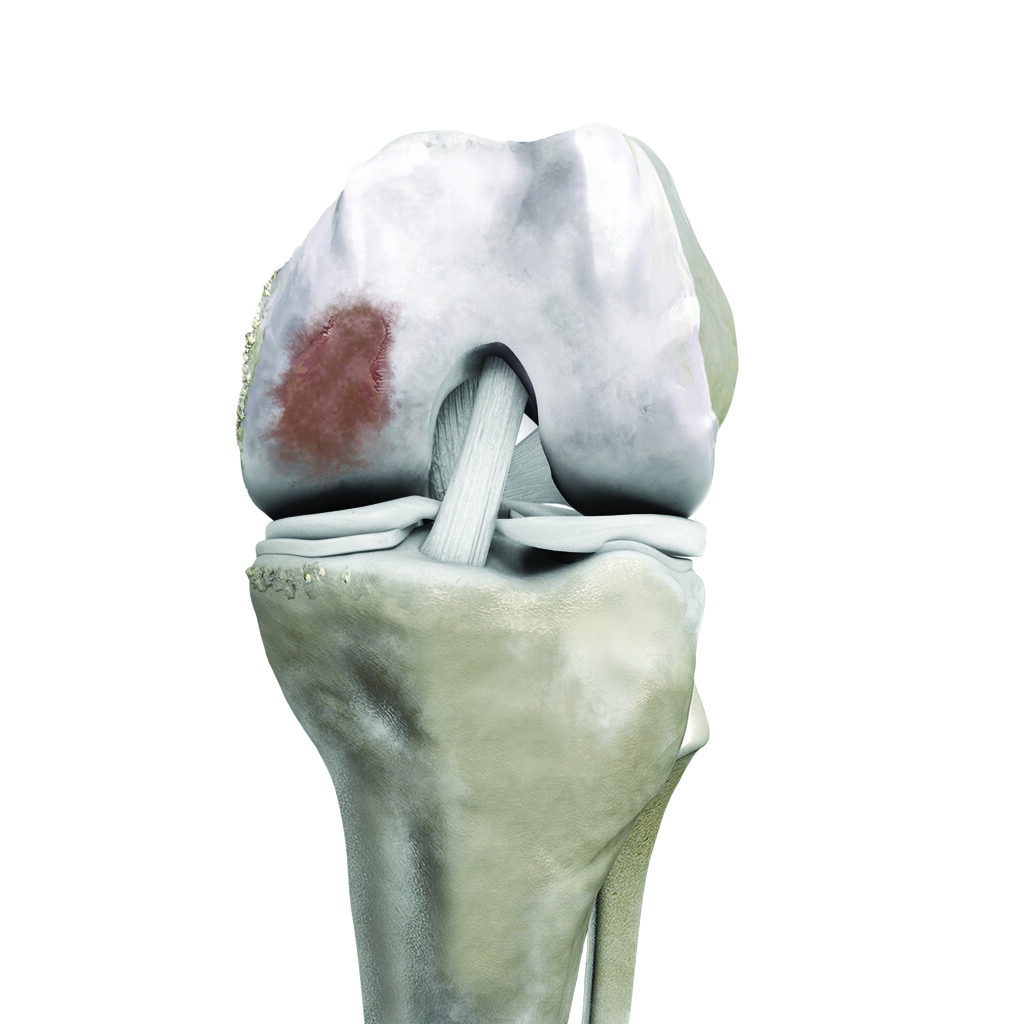Arthritis and unicompartmental knee replacement
Arthritis is a degenerative disease which causes a joints cartilage to gradually degrade. Generally worsening over time and incurable, its symptoms and progress can be managed through prompt intervention.
While it commonly affects both the medial (inner) and lateral (outer) compartments of the knee joint, its effects are sometimes limited to only one side. Less invasive treatment options can be of benefit where this is the case.

Symptoms & treatment
Primary symptoms for arthritis of the knee include pain, swelling, and joint stiffness. Pain may worsen when on movement or following periods of immobility, such as standing after sitting for a while or after getting out of bed in the morning.
This is often accompanied by ‘crunching’ sounds or sensations in the joint during movement, as well as a decreased range of motion.
Treatment for arthritis of the knee
The initial stages of arthritis in the knee are treated conservatively. Your doctor may recommend a walking aid – such as a cane or crutches – to improve your mobility, in combination with anti-inflammatory pain medications and activity modification.
Surgical treatment may be considered where knee arthritis is not effectively managed with conservative measures. Arthritis which is limited to only one portion of the knee may be managed through unicompartmental knee replacement.
Unicompartmental knee replacement
Also known as partial knee replacement, unicompartmental knee replacement involves operating to replace only one surface of the knee joint, as opposed to all of it. Replacing only the diseased surface causes less disruption to the joint and surrounding tissues.
Several types of unicompartmental knee replacement exist, each replacing different areas of the knee and requiring a different type of prosthetic. These include:
- Unicondylar knee replacement – replacing either the knee’s medial or lateral compartment, without affecting the other.
- Patellofemoral knee replacement – replacing a worn patella (kneecap) and trochlea (groove at the end of the thigh bone).
- Bicompartmental knee replacement – Combining a unicondylar and patellofemoral knee replacement to replace two portions for the knee.
If you are suitable for partial knee replacement, the approach and type of prosthetic used will depend on the affected area of the knee. Dr Jonathan Cabot will determine the ideal approach at your pre-surgical consultation.
Indications for unicompartmental knee replacement
Partial knee replacement involves operating on and replacing only one area of the knee. As a result, it is generally not suitable for patients with more extensive arthritis.
These cases are better suited for total knee replacement.
Ulceration of the skin around or under the knee may also impact suitability, as it can greatly increase the chance of infection. Patients who suffer from osteoporosis may not have sufficient bone strength to support the knee prosthetic and may be best suited to another approach.
As with any surgical procedure, Dr Jonathan Cabot assesses suitability on an individual basis and determines an ideal approach with regards to the patient’s lifestyle and required surgical outcomes.
Recovering from unicompartmental knee replacement
Following a unicompartmental knee replacement, you will be allowed to walk around using crutches as soon as you feel comfortable. Most patients return home 1-2 days after the procedure and discontinue the use of walking aids within 3 weeks.
Physiotherapy will continue for several weeks afterwards to strengthen the knee and ensure it develops a full range of motion. A full range of normal activities can generally be resumed 6-8 weeks post-procedure.
The Arthroplasty Society of Australia and Australian Orthopaedic Association recommend avoiding driving until the patient does not require narcotic painkillers and can safely perform an emergency stop. This is typically 4-6 weeks following a knee replacement on the right leg. Bear in mind that some insurance providers have other requirements and these should also be considered.